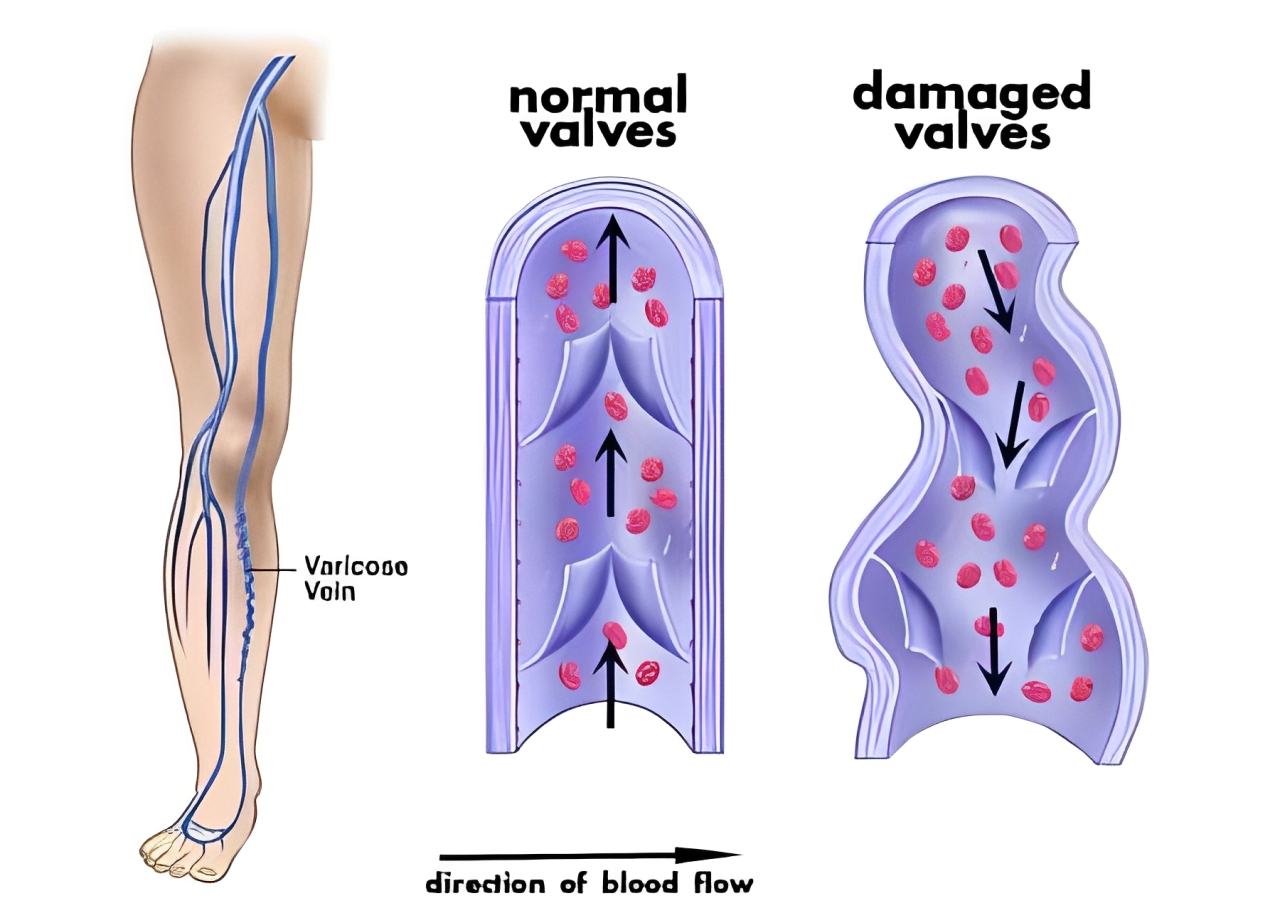Vein disease affects everyone differently. One person may be at the first vein disease stages with only mild symptoms and a few spider veins. However, someone else may be at a different vein disease stage and have more significant symptoms. For example, aching, vein disease in the legs, and ropey veins with swelling in their legs. Vein doctors like Dr. Wright know for certain that vein disease stages will get worse if you don’t get treatment.
Benefits of Vein Disease Treatment at the Laser Vein Center
- NO PAINFUL VEIN STRIPPING
- ONLY LOCAL ANESTHESIA IS USED, INCREASING THE PROCEDURE’S SAFETY
- QUICK AND EFFECTIVE CUTTING EDGE LASER TECHNOLOGIES USED
- QUICK TO NO RECOVERY TIME
- COMPREHENSIVE STEP-BY-STEP PROCESS ENSURES THE BEST RESULTS
- NON-COSMETIC VEIN TREATMENT IS COVERED BY MOST INSURANCE POLICIES
- MULTIPLE SAFE TREATMENT OPTIONS AVAILABLE
- CONTACT DR. WRIGHT TODAY TO LEARN MORE!
Vein Disease Stages:
Clinical Class 1
Vein Disease: Spider Veins (Telangiectasias)
In short, this describes a disease that occurs in tiny veins in the skin. Furthermore, the dilated veins and capillary vessels are called telangiectasias and are more commonly called “spider veins.” They occur in 40% of women and 18% of men. Interestingly, this is the mildest form of vein disease. Moreover, over half of the population has symptoms associated with this vein disease stage.

Clinical Class 2
Vein Disease Stage: Varicose Veins
Certainly, this is the classification for varicose large dilated superficial veins. In this stage, people often become aware of the vein disease. As a result, over 75% of people at this stage have symptoms that interfere with their lives.

Clinical Class 3
Vein Disease Stage: Leg Edema
Slightly more advanced vein disease in the legs causes swelling. Furthermore, the backflow in the venous system interferes with the body’s ability to reabsorb fluid. This leads to the swelling of the leg. In addition, this swelling resolves at the end of the day when the patient elevates their legs. Interestingly, vein disease is the most common cause of leg swelling.

Clinical Class 4
Vein Disease Stage: Skin Changes
Over time the venous congestion leads to changes in the skin. Therefore, the skin becomes thinner and discolored to reddish-brown or whitish in color. During this vein disease stage, the patient can easily injure the skin, and wounds heal slowly.

Clinical Class 5 & 6
Vein Disease Stage: Leg Ulcers
Most importantly, these are the most advanced forms of superficial vein disease. In this case, venous congestion causes venous ulcers. The congestion has now progressed where it interferes with the ability for blood flow to provide nutrition to the skin. With that being said, this makes any skin injury heal very slowly, if at all. If you don’t receive the treatment of the underlying vein disease, 20% of these ulcers remain unhealed at 2 years. We describe “Class 5 Vein” as legs with healed venous ulcers. Furthermore, we describe “Clinical Class 6 Vein Disease” as legs with active ulcers. On top of that, venous disease is the most common cause of ulcers on the leg. However, many people with leg ulcers don’t know that we can effectively treat them.

How Do Vein Valves Play a Role in Vein Disease?
Varicose veins occur when the valves in the veins malfunction. As a result, the vein walls lose elasticity (due, for instance, to age or hormones). Furthermore, this loss of elasticity causes them to stretch. When this occurs, the valve may not be able to close. This then allows blood that should be moving towards the heart to flow backward (called venous reflux). In addition, blood collects in the lower veins which causes them to enlarge and become varicose. In this manner, faulty valves high on the leg may cause varicose veins lower down (e.g., mid or lower leg).
How Do You Diagnose Varicose Veins?
Our experienced staff can examine your legs in order to diagnose varicose veins. For this examination, we use a small, noninvasive ultrasound machine. Ultimately, this detects the blood flowing in the varicose veins. Furthermore, we don’t need to conduct X-rays or blood tests. In conclusion, the ultrasound machine takes pictures of the veins and shows their performance in various locations. In short, we do this to ensure that we are advising the appropriate vein disease treatment.


